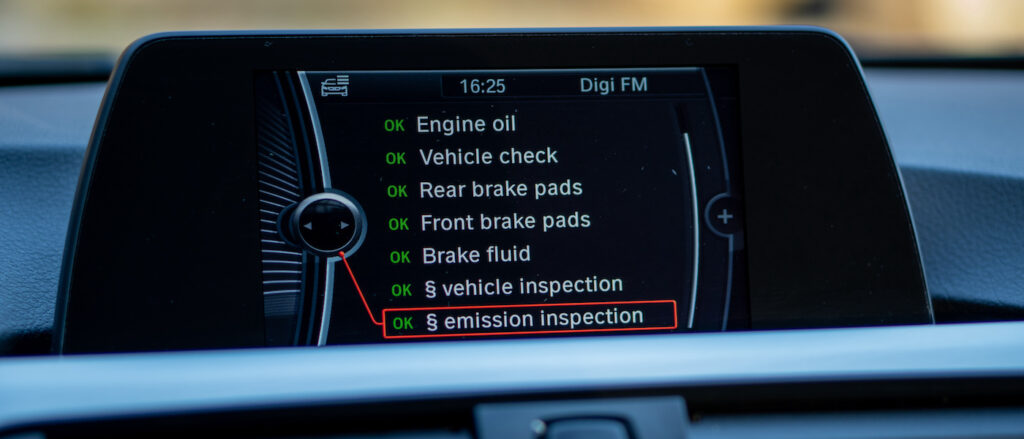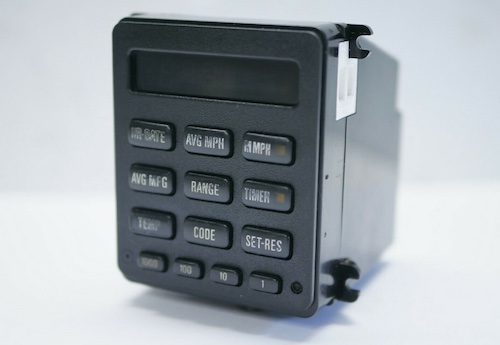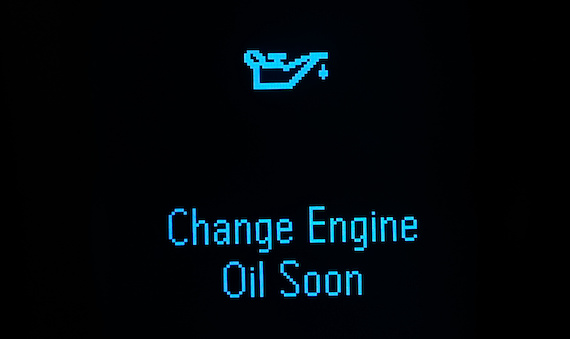Maintenance reminders for oil changes have been around since the early 1980s. Early systems looked at mileage and maybe revolutions of the engine.
Mileage-based systems estimate the life of the oil based on a preset mileage recommendation that can range from 5,000 to 7,500 miles. It can be an effective reminder for some owners, but it does not consider severe-duty operation or a customer who makes only short trips.
Calculation-based or intelligent oil life monitors use multiple inputs to determine the health of the oil. BMW was the first to market with an oil life indicator on the dash that was based on mileage in 1983. The system used the On-Board Computer (OBC) that also could calculate the fuel mileage and elapsed times. A tool that jumped wires in the diagnostic connector was required to reset the lights.
Systems from BMW and Mercedes-Benz base the oil change interval on actual data from the vehicle. At the heart of the equation are still mileage, revolutions and hours of operation. But, these systems also log oil and coolant temperatures to see if the engine has had time to burn off condensates in the oil. Some systems also use calendars to determine if it is time to change the oil. If the date is not set in the driver information center, the oil life monitor might not work.
The most important thing to remember is that these estimates on the health of the oil are built around specific oils recommended by the automakers. Since the vehicle has no idea about the specification of the oil, it is critical the oil matches the oil life monitor.
Reset Procedures
Nothing is more frustrating for a customer than getting in a vehicle after an oil change and seeing that the oil life monitor has not been reset. Either the technician did not realize the vehicle had a reset procedure, or they did not want to look it up. But, it is safe to assume that every 2000 and newer vehicle has a reset procedure.
These procedures can involve doing the hokey-pokey with the keys, buttons and gas pedal to go through menus in the driver information center. Some have three steps, while others have up to eight that have to be performed with military timing.
No matter the reset procedure, information is vital when resetting oil life monitors. Chances are the information is in the vehicle owner’s manual. But, do you want to be rummaging around your customer’s glove box to find the right page?
Service information databases are getting better about putting the reset procedure front and center with an icon on the page after you select the year, make and model. The procedure can change depending on the model year or engine, or even the infotainment option.
The best option is to use a scan tool that can reset the oil life monitor. This functionality might already be on your current scan tool, but there are handheld scan tools that are focused on resets for the oil monitor and other maintenance items, like batteries.
BMW
BMW is the father of the oil and service indicator light. In 1987, the E31 3 Series models had a simple onboard computer to tell customers when they need to change their oil. Jumping pins in the diagnostic connector under the hood could reset the light.
From 1991-‘97, BMW required a special tool to reset the oil change light in some models. But, as the 3, 5 and 7 Series updated platforms, the current Condition Based Service (CBS) was implemented. After the implementation of OBDII, many of the resets moved to the instrument cluster menu and iDrive system. In addition, LEDs were replaced with graphics in the instrument cluster display.
Around 2003, BMW started to use adaptive algorithms and an oil condition sensor to determine the oil change interval.
The oil condition sensor, located in the bottom of the pan, measures oil level, temperature and condition through conductivity. While level and temperature are logical measurements, the conductivity test is unique and not really understood outside of BMW. Speculation is that the sensor measures the dilution of the oil by condensation and fuel. But, mileage, time and fuel consumption are part of the algorithm.
The reset procedures typically have two methods. First, turning the ignition to the run position, and then pressing and holding the Instrument Cluster Set/Reset button for 10 seconds to get to the menu can accomplish the reset. In the BMW service information, they refer to terminal 15. This is the run position of the ignition. The second and best option is to use a scan tool. Many aftermarket scan tools have a shortcut built in to reset the oil life to 100 percent. If the car is equipped with an iDrive system, the oil monitor menu can be found in the Car Data menu.
Mercedes-Benz
In 1998, Mercedes-Benz introduced the Flexible Service System (FSS) that analyzes the engine oil’s “need for service.” FSS monitors the engine oil level and the conductivity of the engine oil to determine when the oil “needs” to be changed. Part of the calculation on some models is using a dielectric oil condition sensor in the oil pan. The first vehicles to get this were models with the 3.2L V6. Later models rolled out the new sensor as either the chassis or engine was updated.
The system determines if the customer needs a minor “A” service or a major “B” service. If the sensor detects conditions that are tough on the oil, it might recommend a “C” or “H” service. All of the services require changing the oil and filter at an interval that can range from 7,000 to 13,000 miles.
Two thousand miles or 30 days before service is due, the FSS indicator in the total mileage speedometer illuminates when the vehicle is first started. The next maintenance due is displayed in miles (or km), or as the days remaining. If the suggested due date for maintenance elapses, the display blinks and is preceded by a minus sign.
The reset procedures can vary dramatically depending on the chassis platform, engine and interior options. Consult your service information or the owner’s manual for the procedure for the model and year.
Volkswagen
VW started equipping its vehicles with maintenance interval reminders in 1993. The programmed maintenance recommendations are based on normal service intervals. When you reset the intervals with the key and button-press methods, you are resetting the maintenance reminder to the normal setting. If you use scan tool to reset the reminder, you can adjust the interval to the customer and conditions.

















